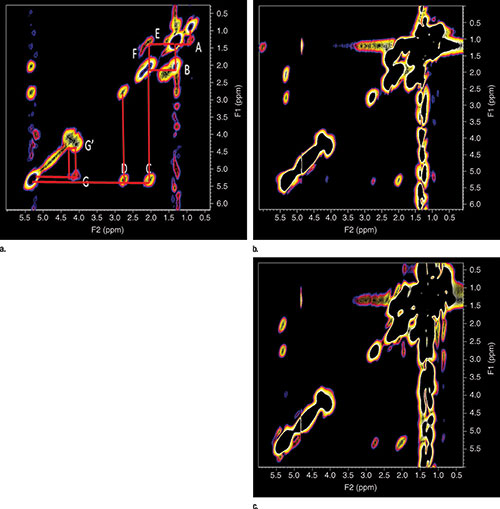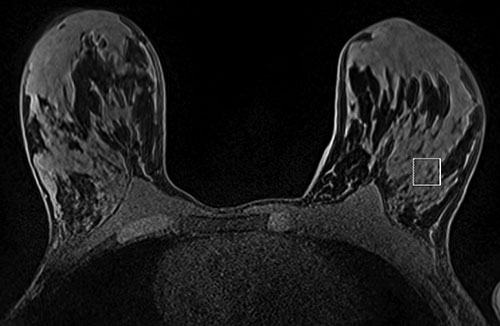EARLY WARNING SIGNAL FOR BREAST CANCER IN WOMEN WITH BRCA GENE

Australian researchers have developed a new magnetic resonance spectroscopy (MRS) technique that may reduce or delay the need for preventive mastectomies among women carrying the BRCA gene mutations, and therefore at risk of breast cancer.
According to a study published today (MARCH 3) in the US journal Radiology*, the non-invasive scanning technology – using a state-of-the-art Siemens Magnetom Prisma 3T scanner – detected a series of biochemical deregulation in breast tissue.
It could provide early warning signs and improve ongoing risk management for women with BRCA gene abnormalities.
RELATED LINKS
Mutations with BRCA1 and BRCA2 bring a 50 per cent risk of developing breast cancer before the age of 50, and many carriers currently opt to have mastectomies to avoid getting cancer later in life.
Using a technique known as localised correlated spectroscopy (L-COSY), researchers from the University of Newcastle and Brigham and Women’s Hospital in Boston identified chemical disparities associated with the pre-invasive cancer state – a very early stage of disease development.
“These changes appear to represent a series of early warning signs that may allow women to make informed decisions as to when and if they have a prophylactic mastectomy,” said lead author Professor Carolyn Mountford, CEO and Director of Research at the Translational Research Institute (TRI) in Queensland and conjoint professor with the University of Newcastle.
“It took a multidisciplinary team, including an MR physicist, chemists, surgeons, radiographers and radiologists to be sure that what we were seeing wasn’t apparent from conventional contrast-enhanced imaging.”
The researchers performed L-COSY on 23 women carrying BRCA mutations and compared the results with those from 10 healthy controls who had no family history of breast cancer.
While no abnormality was recorded by standard contrast-enhanced MRI scans and ultrasound, L-COSY identified statistically significant biochemical changes in women with BRCA1 and BRCA2 gene mutations compared to the controls.
Study co-author Dr David Clark, from the Breast and Endocrine Centre in Gateshead (NSW), believes the protocol may help guide treatment decisions and bring added reassurance for BRCA-positive women.
“We think there are three stages of pre-cancer progression in the breast tissue,” he said. “Women at Stage 1 could monitor their breasts with follow-up spectroscopy every six months.
“Approximately half the women who have BRCA mutations may not develop breast cancer at all, and certainly not before they turn 50, so we can advise a significant number of them that, yes, they may need a mastectomy one day … but not yet.”
Dr Saadallah Ramadan, a physical chemist from the University of Newcastle, specifically programmed the MR scanners to suit the L-COSY protocol as the software is not commercially available.
“It’s the first time in the world it has been used for BRCA and the results were very assuring,” Dr Ramadan said. “Our error margin was small enough to suggest the test can be repeatable on a larger scale.”
The researchers now aim to expand the trial and will continue to monitor women in the original study group to learn more about the biochemical changes and what they represent.
Professor John Forbes from the ANZ Breast Cancer Trials Group believes the technology is extremely important.
“It may allow a more precise and earlier assessment of breast cancer risk for women known to have a BRCA1 or BRCA2 gene mutation,” he said. “Currently these women have to consider early detection and risk management strategies without knowing whether they will actually get breast cancer or when it might occur.”
A large part of the work was carried out at the Hunter Medical Research Institute in Newcastle.
Home to the most advanced scanning technology in the southern hemisphere, it houses Australia’s most powerful clinical research magnet: the Siemens Magnetom Primsa 3T MRI.
The institute partners with Newcastle University and Hunter New England Health. As Director of the University’s centre for MR in Health, Professor Mountford and her team have served as the world-wide development unit for Siemens Healthcare MRS.
Siemens Australia CEO Jeff Connolly congratulated Professor Mountford and her team on the results of their research.
“Siemens has long held the belief that technology cannot reach its full potential in the factory. To truly advance human health we need partnerships like this with HMRI and people like Professor Mountford and her team to maximise the potential of our leading medical research minds.

Typical localized COSY spectra in three women with the cross peaks assigned (A–G’) as per Figure 2. Images in (a) healthy 55-year-old con¬trol subject, (b) apparently healthy 56-year-old woman with BRCA1 mutation, and (c) apparently healthy 58-year-old woman with BRCA2 mutation.

Unenhanced image shows region of interest placement in a 30-year-old control subject. This is the spectroscopic voxel location from which 2D localized COSY data were collected.
MEDIA CONTACTS
HMRI: Mark Rothfield (02) 4042 0590 | 0487 617 055 | [email protected]
Siemens: Keith Ritchie (03) 9721 7230 | 0457 841 189 | [email protected]
TRI: Louise Morland (07) 3443 7744 | 0417 679 306 | [email protected]







